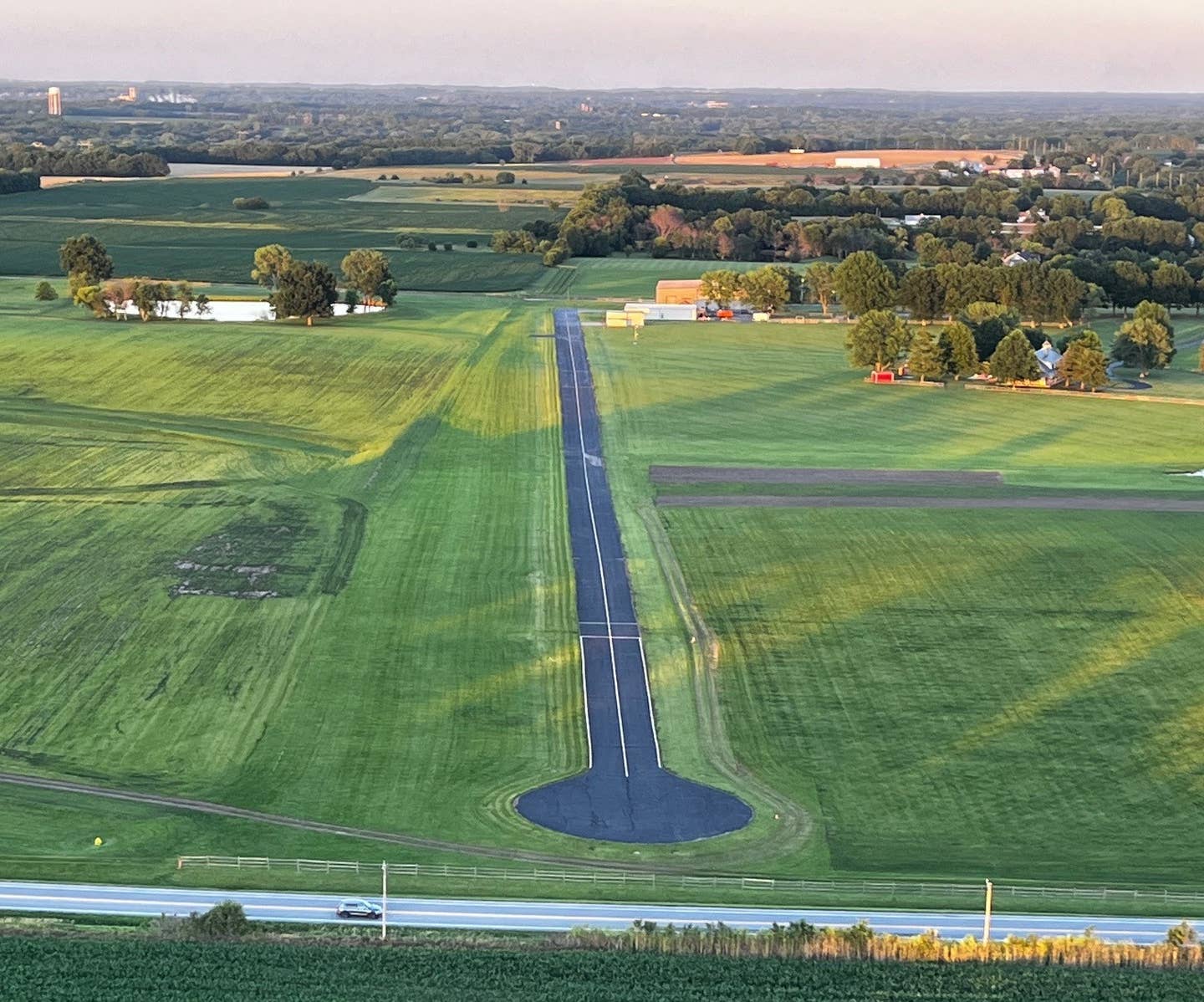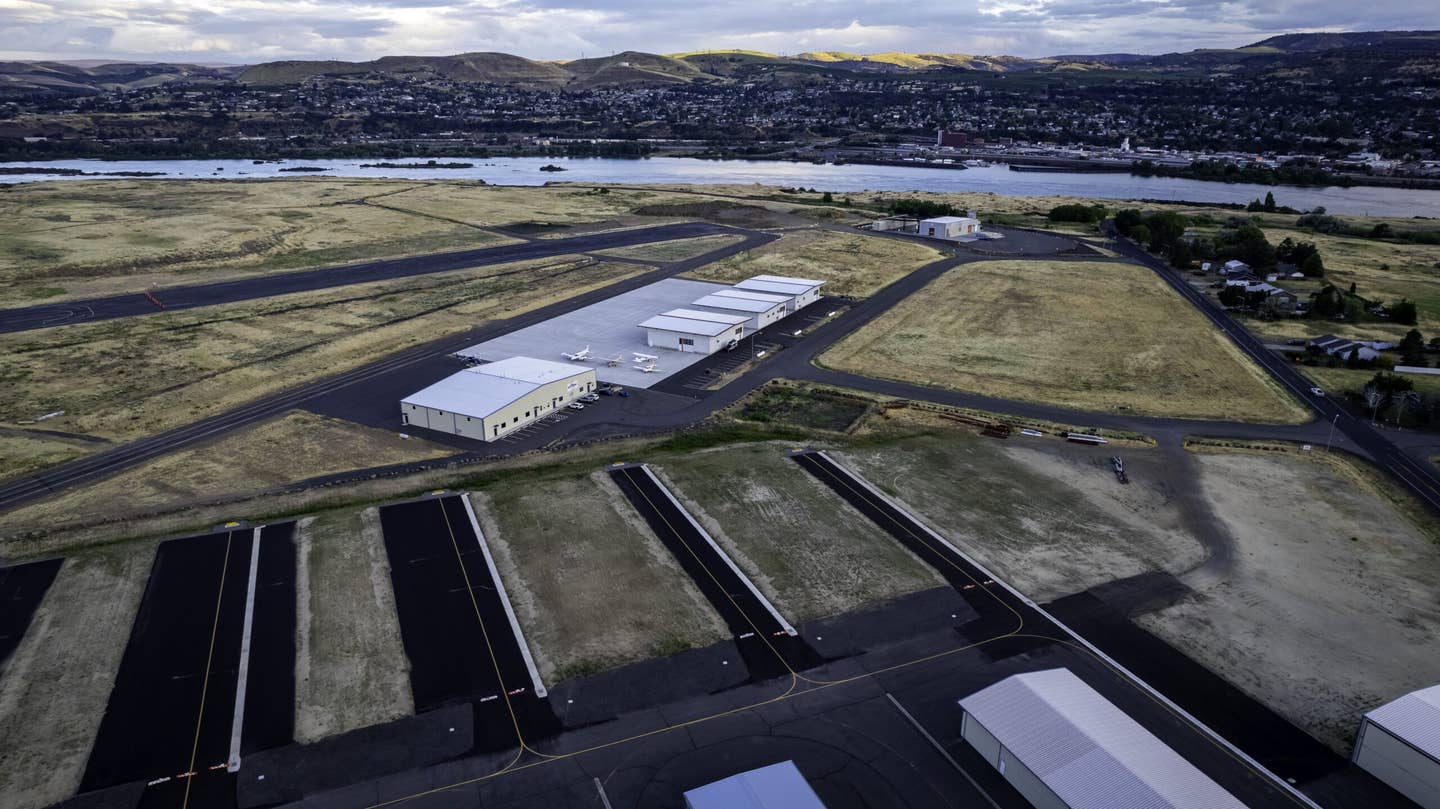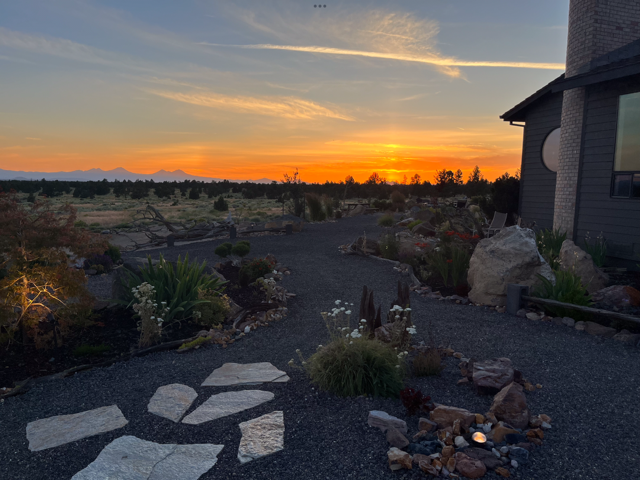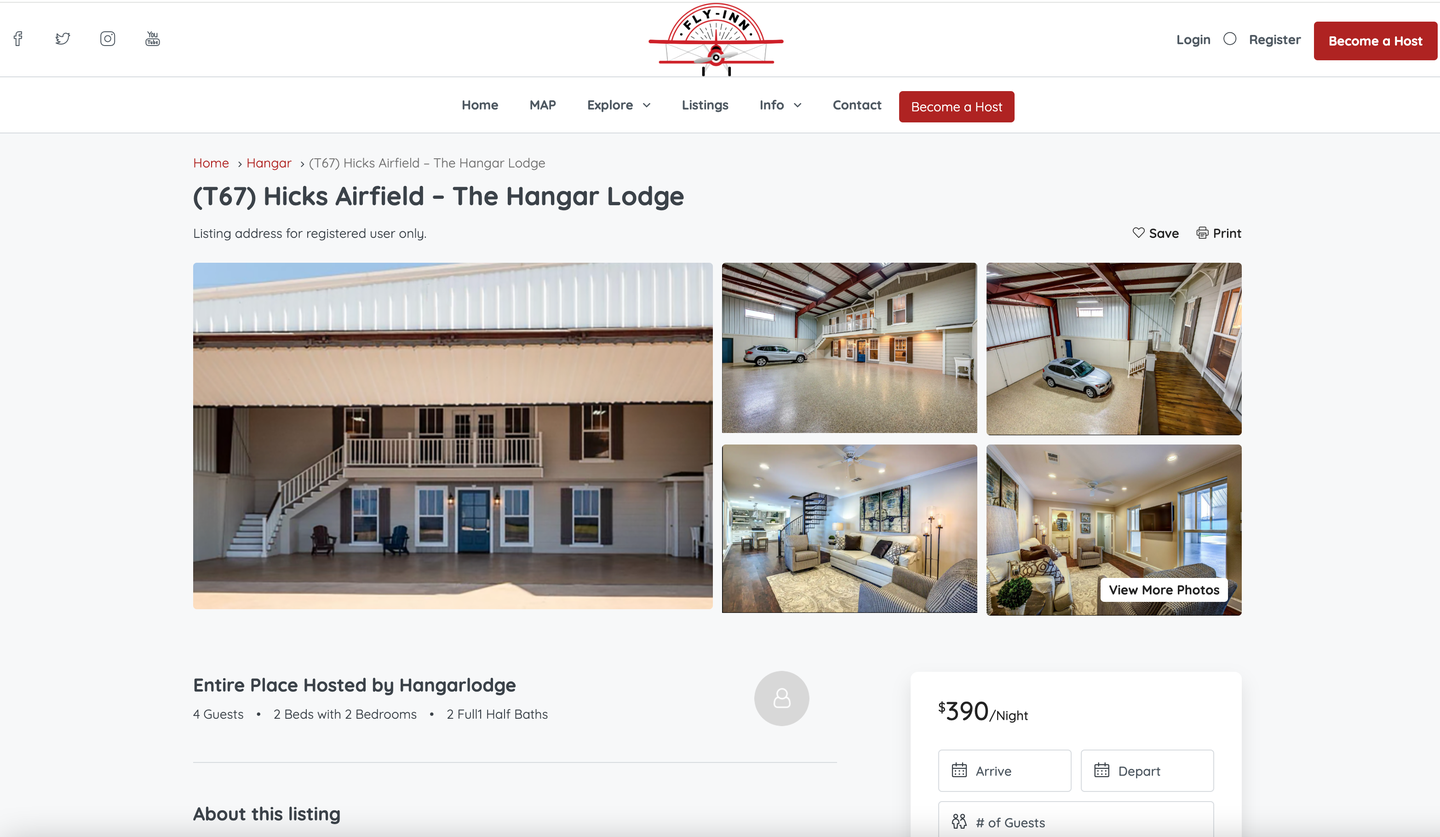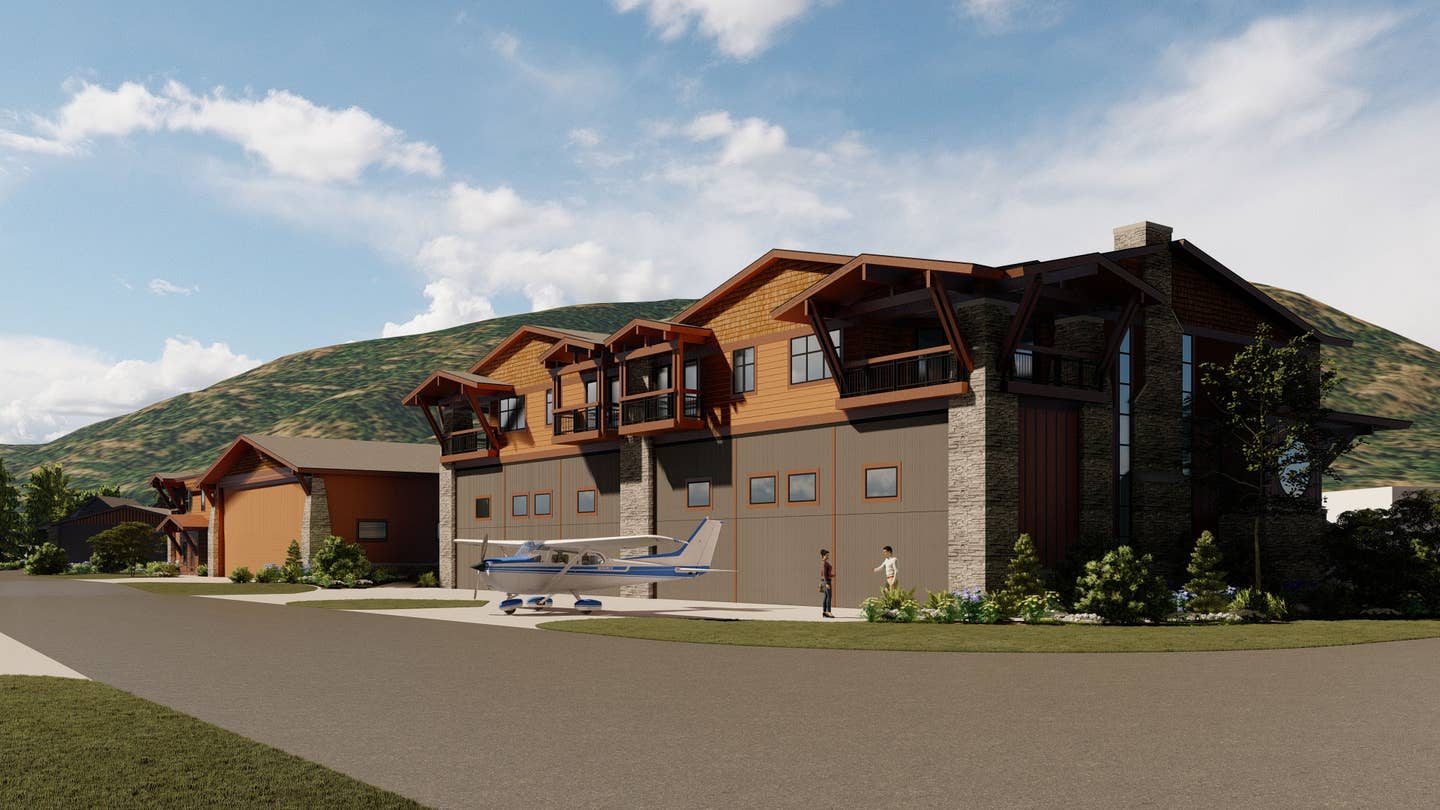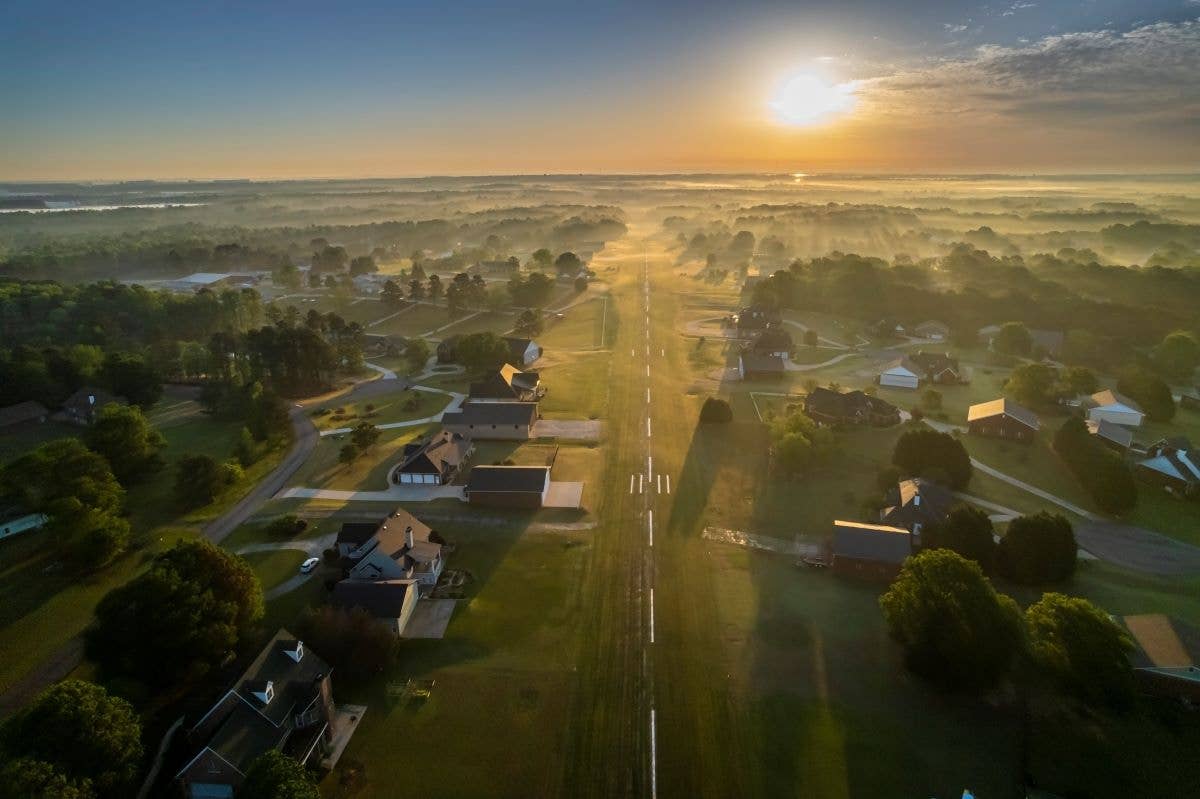Vaca Moo Airport: A Little Facility with Texas-Sized Heart
This grass strip’s identity is formed by a retired military pilot with a love for aviation—and a little girl with an eye for cows.
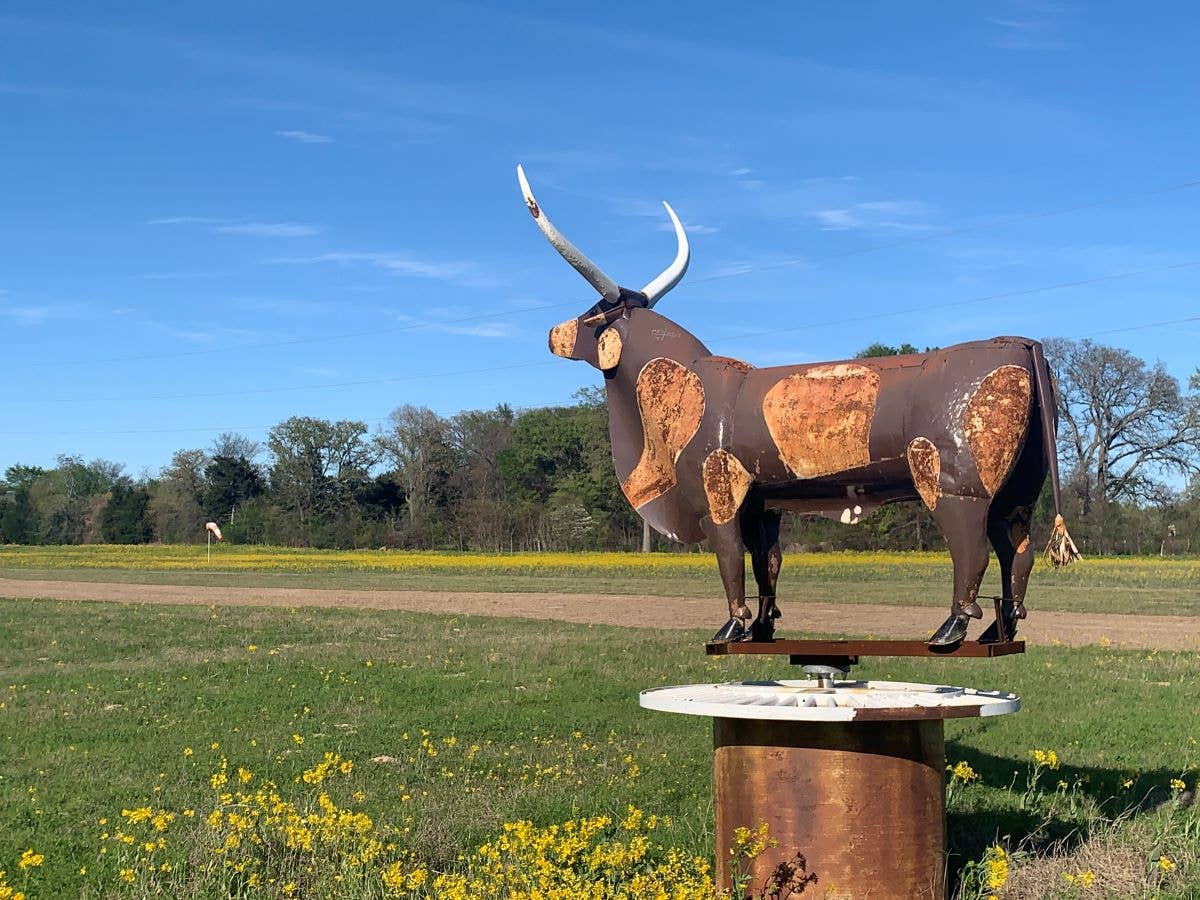
Vaca Moo Airport (TA37) in Ben Wheeler, Texas, boasts what is possibly the most unique wind indicator—Texas Longhorn cow that rotates with the wind. [Credit: Vaca Moo Airport]
Carlos Rodriguez-Botet’s work as a medevac pilot brought him to Texas. Later on, retirement from flying full time allowed him to become more involved with a privately owned grass strip in Ben Wheeler, Texas, which he now owns.
“I used to fly a little experimental [airplane] out of here,” Rodriguez-Botet said. “All I would do was cut the hay field whenever I wanted to fly, which was not very often because I was flying air ambulances. Come back about six years ago, I finally retired from civilian work, and I decided that I would make this into a real runway. So, I started working on it, removing some tree stumps and building a 1,500-foot-long runway and got it registered with the FAA, got the FCC Unicom frequency license and all of that legal stuff up to speed.”
When he realized he wasn’t getting visitors because he made the runway too short, his work also included improving and extending the sole turf runway, which is now 2,480 feet long. Rodriguez-Botet even added hangars to the property. All that the airport was missing was a name.
“My granddaughter, Selenne, is from Puerto Rico and knew Spanish, so I was teaching her English,” he said. “She was 5 or so years old, so our game was that when we were driving around and would see an animal, she would say what it was. If we saw a cat, she would say, ‘gato, cat, meow.’ So, Spanish, English, then the sound. So, a cow was ‘vaca, cow, moo.’
“One morning, we were outside looking at the cows on my field, and I asked her what they were. Instead of saying ‘vaca, cow, moo,’ she started dancing the twist and saying ‘vaca, moo,’ ‘vaca, moo!’ Then I said, ‘That’s the name for the airport!’ So that’s where Vaca Moo came from.”
He has done all of this, and other work, at the airport alone. Taking care of the runway, which he aims to redo every three or four years, has been a great point of pride for Rodriguez-Botet.
“I flew to many grass runway airports and noticed that one of the biggest safety issues and headaches for pilots trying to leave were planes trying to back-taxi while others wanted to take off on the same 80-foot-wide runway,” he said. “You either had to wait for a long time or had to get in the middle of a plane taking off and pray they didn't rip off part of your wing as they went by. I also asked a few of the pilots what they would do to make that runway better, and they laughed and said a taxiway. So, I solved that here with the taxiway."
According to Rodriguez-Botet, the airport's grass runway is flat, smooth, has clear approaches on both ends, and features an adjacent 2,500-foot-by-50-foot grass taxiway.
He takes his job as an airport owner seriously. And as a natural host, he has welcomed people at Vaca Moo from all over the country.
“When I was building out the airport, I knew that I was going to be retiring from the Air Force Reserve soon and wouldn’t have anything to do,” he said. “And what do pilots like to do? They like to be around other pilots. So, I said that I am going to make this really, really nice so people come and visit, camp, and all of that stuff.
“I’ve had people come from Georgia, Florida, Mexico, and other places. I’ll take them and drive them to [Ben Wheeler], which is about a mile away, to have lunch, or we will start the barbeque. Other people have had to stay here because of bad weather. They are flying by and land. I’ll stick them in one of my hangars, and I don’t charge anything for anything. Everything is free here at this airport. They may leave their airplane in the hangar for a week, and I’ll drive them home, then they come back whenever they can to pick up their plane.”
Sometimes forecasted inclement weather also draws visitors to Vaca Moo Airport (TA37), located about an hour southeast of downtown Dallas.
“Every year during hurricane season, I like to invite people to bring their planes here,” Rodriguez-Botet said. “It’s far away from the coast, so we don’t have the strong winds from the hurricane—even though we do get some of the rain. We will accommodate them in the hangars, and once those are full, tie down the rest. Again, it’s all free and that’s my thing.”
In addition to the short-term visitors that have stayed at Vaca Moo over the years, several people presently live at the airport. There are six rental units, all of which are 1,552 square feet, with two bathrooms and two bedrooms. These abodes could serve as a basis for Rodriguez-Botet’s visions for how the property may evolve in the coming years, now that he finally retired from the Air Force Reserve after 38 years of service.
Regardless of how the airport evolves, he intends for it to keep the same intimate vibe that it has now.
“I would love to sell lots here, but I don’t want to do it like at other airparks,” he said. “I have 65 acres here and could take 25 acres of 5-acre lots, or something like that. Or if I could sell half of the airport to someone else, that would be a big help because it’s a lot of work for just one person. It’s just me and I do everything. I’ve got a few people that come and help every few months for a few hours, though. But I would be happy to sell half of the airport to someone to get more active hands here. That’s what I see in the next few years, selling half of it or maybe selling to three or four people. Keeping it small, so it’s controllable, and everybody has the same mindset. It’s my dream.”
While owning and operating the airport is a passion for the airline transport rated pilot with thousands of hours, he also enjoys sharing aviation with others above all.
“This sounds weird from a pilot with four decades experience,” Rodriguez-Botet said. “I like to fly, but I love to teach. Right now, I am finally getting my dream of having a full-motion flight simulator. That way, people who are wanting to learn, we can do their first flight in it if the weather is bad, if not in the plane. It will lower my costs of showing aviation to more people.”
Pilots can keep up to date with Vaca Moo Airport by following its Facebook page.

Subscribe to Our Newsletter
Get the latest FLYING stories delivered directly to your inbox

